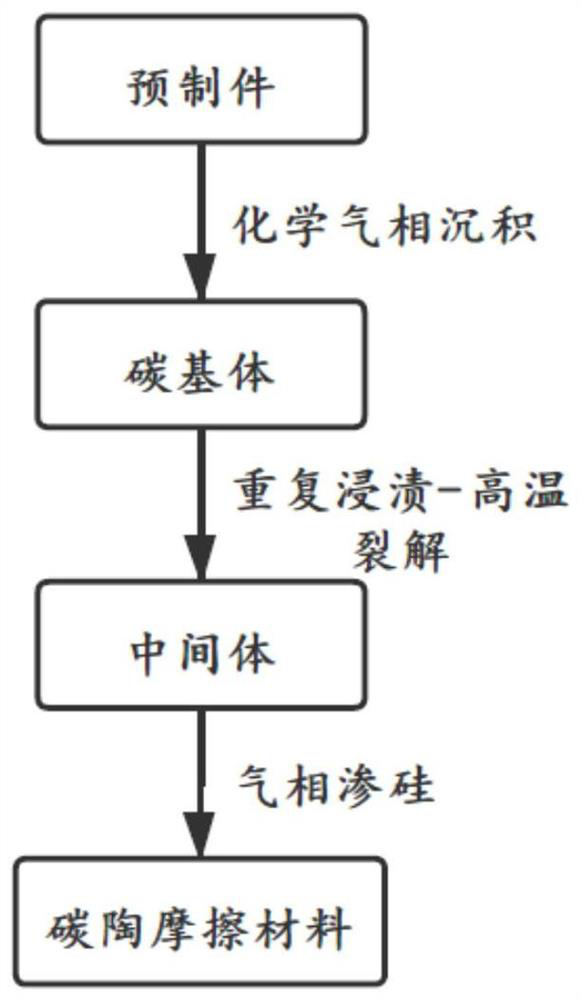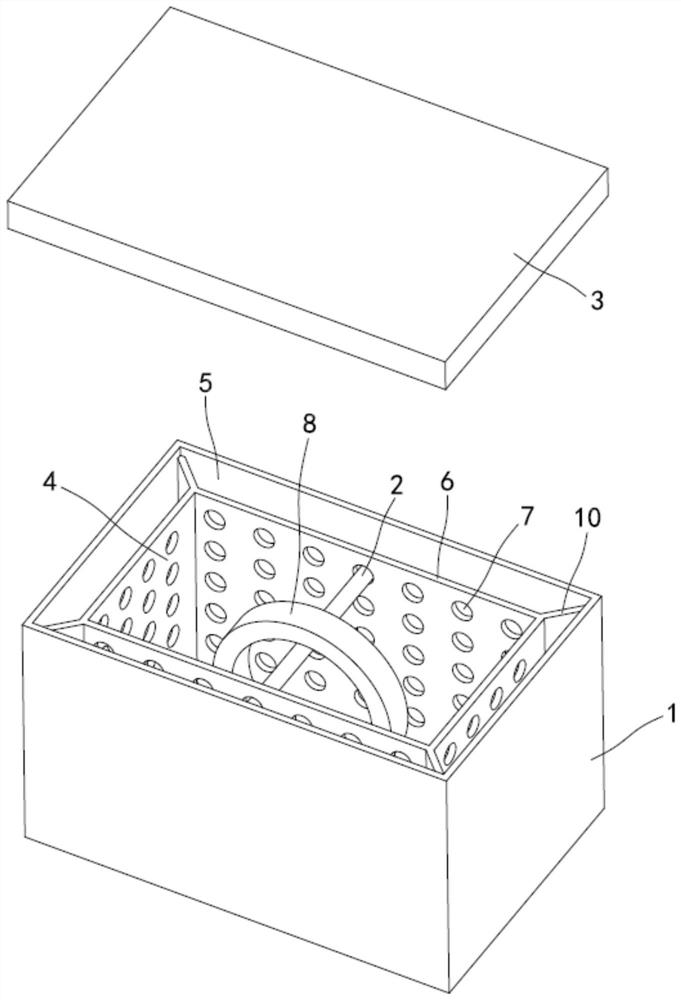Preparation method and application of a carbon ceramic friction material
A technology of friction materials and carbon ceramics, which is applied in the direction of friction linings, brake discs, brake parts, etc., can solve the problems of reduced creep resistance, slow densification speed, and performance degradation, and achieves improved mechanical properties and friction The effect of stabilizing the coefficient and reducing the porosity
- Summary
- Abstract
- Description
- Claims
- Application Information
AI Technical Summary
Problems solved by technology
Method used
Image
Examples
Embodiment 1
[0030] Embodiment 1 of the present invention provides a preparation method of a carbon ceramic friction material, comprising the following steps:
[0031] A) Obtain prefabricated parts made of carbon fiber;
[0032] B) using propylene as the carbon source gas and argon as the carrier gas, using the chemical vapor deposition infiltration process to carry out deposition and densification on the preform to prepare a carbon matrix;
[0033] C) Using polycarbosilane as the silicon source to make an impregnating solution, placing the carbon matrix in the impregnating solution for dipping, after dipping for a predetermined time, introducing a protective gas to carry out high-temperature cracking, and repeating the dipping-high-temperature cracking operation until obtaining Intermediates of predetermined density;
[0034] D) Place silicon particles in a graphite crucible, place the intermediate in the graphite crucible with a graphite rod, and separate the intermediate from the silic...
Embodiment 2
[0040] Embodiment 2 of the present invention provides a preparation method of a carbon ceramic friction material, comprising the following steps:
[0041] A) Obtain prefabricated parts made of carbon fiber;
[0042]B) using propylene as the carbon source gas and argon as the carrier gas, using the chemical vapor deposition infiltration process to carry out deposition and densification on the preform to prepare a carbon matrix;
[0043] C) Using polycarbosilane as the silicon source to make an impregnating solution, placing the carbon matrix in the impregnating solution for dipping, after dipping for a predetermined time, introducing a protective gas to carry out high-temperature cracking, and repeating the dipping-high-temperature cracking operation until obtaining Intermediates of predetermined density;
[0044] D) Place silicon particles in a graphite crucible, place the intermediate in the graphite crucible with a graphite rod, and separate the intermediate from the silico...
Embodiment 3
[0050] Embodiment 3 of the present invention provides a preparation method of a carbon ceramic friction material, comprising the following steps:
[0051] A) Obtain prefabricated parts made of carbon fiber;
[0052] B) using propylene as the carbon source gas and argon as the carrier gas, using the chemical vapor deposition infiltration process to carry out deposition and densification on the preform to prepare a carbon matrix;
[0053] C) Using polycarbosilane as the silicon source to make an impregnating solution, placing the carbon matrix in the impregnating solution for dipping, after dipping for a predetermined time, introducing a protective gas to carry out high-temperature cracking, and repeating the dipping-high-temperature cracking operation until obtaining Intermediates of predetermined density;
[0054] D) Place silicon particles in a graphite crucible, place the intermediate in the graphite crucible with a graphite rod, and separate the intermediate from the silic...
PUM
| Property | Measurement | Unit |
|---|---|---|
| density | aaaaa | aaaaa |
| density | aaaaa | aaaaa |
| density | aaaaa | aaaaa |
Abstract
Description
Claims
Application Information
 Login to View More
Login to View More - R&D
- Intellectual Property
- Life Sciences
- Materials
- Tech Scout
- Unparalleled Data Quality
- Higher Quality Content
- 60% Fewer Hallucinations
Browse by: Latest US Patents, China's latest patents, Technical Efficacy Thesaurus, Application Domain, Technology Topic, Popular Technical Reports.
© 2025 PatSnap. All rights reserved.Legal|Privacy policy|Modern Slavery Act Transparency Statement|Sitemap|About US| Contact US: help@patsnap.com



